FACING THE LION: By Maasai Warriors
Disclaimer: Maasai Association does not promote nor support lion hunting
practice. Our purpose here is to educate the world about Maasai
culture and traditional believes about lion hunting. Lion hunting was symbolically a rite of passage of the past.
How
did the Maasai warriors hunt lions?
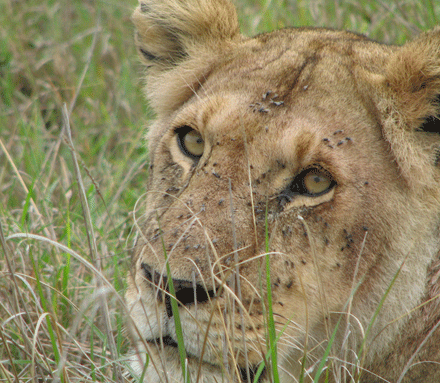 Facing
a lion in the African savanna was an experience of a life time.
From that day your life would change forever. Hunting a lion
was traditional, fun, and dangerous. The question is, why did
the warriors hunt lions?
Facing
a lion in the African savanna was an experience of a life time.
From that day your life would change forever. Hunting a lion
was traditional, fun, and dangerous. The question is, why did
the warriors hunt lions?
The
following are some of the cultural reasons, strategies, and
tools used by the Maasai warriors on lion hunt.
Lion
hunt was a traditiona and historical practice that played an important role
in the Maasai culture. The practice was different from trophy
hunting; it was symbolically a rite of passage rather than a
hobby.
Why
did the Maasai warriors hunt lions?
The
Maasai tribe saw lion hunting experience as a sign of bravery
and personal achievement. In the past, when the lion population
was high, the community encouraged solo lion hunt. However,
over the last several years, due to the decline of the lion population,
mainly because of rabies and canine distemper virus, the community
adapted a new rule that encouraged warriors to hunt in groups
instead of solo lion hunt. Group hunting, known in Maasai as
olamayio, gave the lion population a chance to grow.
According
to Maasai customary laws, the warriors were not allowed to hunt
a lion, suffering from drought, snared or poison. The Maasai
believed that female lions are the bearers of life in every species.
As a matter of fact, it was prohibited to hunt a female lion-- unless the
lioness posed threat to livestock or human life.
The
Maasai well understood that lions are important to the savanna's
ecology. For that reason, the Maasai took extra
caution when it comes to lion hunt. The Maasai warriors did not
just go out and hunt lions because they can. The rules were there
and were followed by every warrior.
Lion
hunting experience allowed the Maasai warriors to show off their
fighting ability on a non-human target. At the end of each age-set,
usually after 10-15 years, the warriors would count all the lions
hunted, then compared with those hunted by the previous
age-set. The purpose was to compare the number of lions hunted between previous and current age-set.
Hunting
a lion in a group
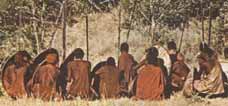
Empikas ( lion hunting delegation) planned for lion hunt
a few days before. The planning was done in a secret
manner. No one in the community, other than the warriors, should
know about the day for lion hunt. The practice was so secret that
Ilbarnot (junior warriors) from the same age-set were denied information
regarding the lion hunt. Senior warriors feared that junior warriors
would immaturely leak out information to groups that opposed
to lion hunting practice. When a warrior spread rumors and found
guilty, his colleagues would punish him in the form of beating.
In addition, the betrayer would be looked down upon by age mates for years to come.
Solo
lion hunting
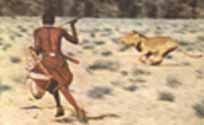 It
was not easy to hunt a lion alone. However, many Maasai warriors
did it. Solo lion hunting required confidence and advance
hunting skills. A warrior must be passionate about the game.
Unlike group hunting, solo lion hunting usually happened
at random; for example, when the warrior was out herding cattle.
It
was not easy to hunt a lion alone. However, many Maasai warriors
did it. Solo lion hunting required confidence and advance
hunting skills. A warrior must be passionate about the game.
Unlike group hunting, solo lion hunting usually happened
at random; for example, when the warrior was out herding cattle.
Lion
hunting journey
The
lion hunting journey started at dawn, when elders and women were
still asleep. The warriors sneaked out of the village in order
to avoid discouragement from elders and women. The warriors would meet at
a nearby landmark, for example, a tree, hill or rock. From here,
the warriors departed to a predetermined area, where lions were
most likely found. The warriors usually located lions
by tracking them using footprints, animal droping and/ or vultures..
A
few minutes before departure, the warriors must go through a
sorting process that seperate junior warriors from senior warriors. In the warrior tradition seniority have the decision making powers. Ilmorijo (senior warriors) must select a group
of qualified comrades with elaborate hunting skills. The selected group was considered mature, strong
and capable to face a lion. The group was known as Ilmeluaya (fearless warriors) who were ready to die or live.
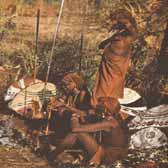 Ilbarnot
(junior warriors) who were disqualified were sent back home for
rest. Not every warrior would accept to return home. Rejection
of junior warriors often triggered a fight between junior and senior
warriors. The warriors fought each other with clubs, sticks and
shields. Junior warriors would always lose the fight; even though, it was still worth a try.
Ilbarnot
(junior warriors) who were disqualified were sent back home for
rest. Not every warrior would accept to return home. Rejection
of junior warriors often triggered a fight between junior and senior
warriors. The warriors fought each other with clubs, sticks and
shields. Junior warriors would always lose the fight; even though, it was still worth a try.
Also the
fight between junior and senior warriors would trigger major
conflict among senior warriors, when a warrior from the dominant group
would defend a junior warrior from his clan or family. This situation often pushed the decision making
process into extreme. Group dynamics
was treated as part of the learning process.
The
rejects, junior warriors, are commanded by senior warriors to
keep the lion hunting information confidential, until their
colleagues return home from hunting. Also, there have been cases
whereby senior warriors forced junior warriors to give up
their spears and shields. This was an insult to junior warriors,
as extra weapons were not necessarily needed to hunt a lion.
One spear was sufficient to bring a lion down. The attitude of forcing junior
warriors to give up their weapons was a measure to encourage them
to be a little more responsible.
 When
the senior warriors return home with a lion, a one-week celebration
would take place throughout the area. Women from various villages
would embrace and hug the warrior that speared the lion first.
The warrior would receive Imporro, a doubled-sided beaded shoulder
strap often given to a victor. The warrior would wear this ornament during the milk
ceremony, meat ceremony, etc.
When
the senior warriors return home with a lion, a one-week celebration
would take place throughout the area. Women from various villages
would embrace and hug the warrior that speared the lion first.
The warrior would receive Imporro, a doubled-sided beaded shoulder
strap often given to a victor. The warrior would wear this ornament during the milk
ceremony, meat ceremony, etc.
The
success of lion hunting brought excitement and gratitude to the
entire community. The achievement was perceived as individual
bravery. The community honored Olmurani lolowuaru (the lion hunter)
with much respect throughout his lifetime. The hunter would also
receive a nickname, for example, Miseyieki, from his colleagues.
Miseyieki means no one will ever dare to mess with him. When
the warriors attend ceremonies in other communities, they would
praise their colleague through songs and dance.
Where
did the Maasai warriors find lions?
 The lions were abundant throughout Maasailand. Their typical
hideouts were grassy plains and deep in the forests. The lion
search ranges from 20 minutes to 10 hours. The Maasai warriors
must chase a lion with rattle bells and make him upset. This
chasing game irritated, angered, and forced a lion to face the hunters.
Another successful lion hunting method was to force a lion to leave a kill. Any of these methods would provoke a fight
with a lion.
The lions were abundant throughout Maasailand. Their typical
hideouts were grassy plains and deep in the forests. The lion
search ranges from 20 minutes to 10 hours. The Maasai warriors
must chase a lion with rattle bells and make him upset. This
chasing game irritated, angered, and forced a lion to face the hunters.
Another successful lion hunting method was to force a lion to leave a kill. Any of these methods would provoke a fight
with a lion.
Recommended
safe environment when hunting a lion
Fighting
a lion inside the woodland savannah can be extremely challenging and dangerous.
The lion is very smart and can maneuver through the bushes
faster than a human being. As a result, the Maasai warriors
preferred to fight lions in the open plains. By doing so, the warrior
gave a lion a chance to fight. Lion hunting was all about challenging
another creature without cheating. Facing a lion in the open
savanna was a remarkable challenge.
What
did the Maasai do with a dead lion?
T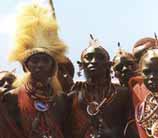 he
Maasai do not eat game meat. They strictly depend on cows, sheep, and goats. Three products are used from a dead lion:
the mane, tail and claws. The mane is beautifully
beaded by village women and given back to the hunter.
The mane is won over the head, only during special ceremonies.
The mane helped warrior from far areas to identify the
toughest warrior.
he
Maasai do not eat game meat. They strictly depend on cows, sheep, and goats. Three products are used from a dead lion:
the mane, tail and claws. The mane is beautifully
beaded by village women and given back to the hunter.
The mane is won over the head, only during special ceremonies.
The mane helped warrior from far areas to identify the
toughest warrior.
After
the meet ceremony, when a warrior became a junior elder, he
was obliged to throw away the lion mane. The warrior was required to sacrifice a lamb, oil the mane with sheep oil and dispose it in the wilderness. This sacrificial event was done to avoid
bad spirits. The mane has special spiritual attachment to the
warrior. It was a must for a warrior to honor the mane.
The
lion tail was stretched and soften by the warriors, then hand
it over to the village women for beading. The warriors
would receive the tail back when the beading was done.
The warriors would keep and guide the lion's tail in their manyatta
(warriors' camp), until the end of warrior hood. The lion tail
was the most valuable product in the practice of lion hunting.
After graduation, a group of warriors would come together and pay their
last special respect to all the lion tails collected during moran hood. The lion tails were thrown away after
the eunoto ceremony.
How
did the Maasai warriors pursue a lion tail?
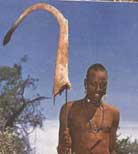 The
way of pursuing the lion's tail varied from section to section.
For example, in Ilkaputiei section, when a lion was hunted,
the warriors had to wrestle in order to get the tail. The tail
goes to the strongest warrior. In Ilkisonko section, the tail
went to the warrior who first speared the lion.
The
way of pursuing the lion's tail varied from section to section.
For example, in Ilkaputiei section, when a lion was hunted,
the warriors had to wrestle in order to get the tail. The tail
goes to the strongest warrior. In Ilkisonko section, the tail
went to the warrior who first speared the lion.
Tools
and requirements
The
lion hunting game was about group and individual commitment, strength, goal and dedication.
The game was based on your personal background, environment and culture.
The warriors did not need to attend a gym, nor a
rifle for lion hunting. All you needed was one spear and one shield.
Many warriors have been lost to lions. At the same time many lions have been lost to warriors.
Note: Kindly do not try ideas, strategies, and tools shared
in this chapter. Information given here is not
a manual for lion hunting. Instead, the information shared here is for learning purposes. Once more, lion hunting was an activity of the past. With the rise of conservation groups in the Maasai region lion hunters have been converted to become lion guardians. Local problems requires local solutions.
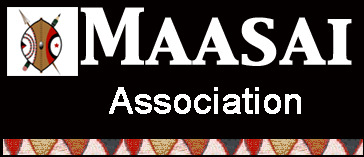



 It
was not easy to hunt a lion alone. However, many Maasai warriors
did it. Solo lion hunting required confidence and advance
hunting skills. A warrior must be passionate about the game.
Unlike group hunting, solo lion hunting usually happened
at random; for example, when the warrior was out herding cattle.
It
was not easy to hunt a lion alone. However, many Maasai warriors
did it. Solo lion hunting required confidence and advance
hunting skills. A warrior must be passionate about the game.
Unlike group hunting, solo lion hunting usually happened
at random; for example, when the warrior was out herding cattle. Ilbarnot
(junior warriors) who were disqualified were sent back home for
rest. Not every warrior would accept to return home. Rejection
of junior warriors often triggered a fight between junior and senior
warriors. The warriors fought each other with clubs, sticks and
shields. Junior warriors would always lose the fight; even though, it was still worth a try.
Ilbarnot
(junior warriors) who were disqualified were sent back home for
rest. Not every warrior would accept to return home. Rejection
of junior warriors often triggered a fight between junior and senior
warriors. The warriors fought each other with clubs, sticks and
shields. Junior warriors would always lose the fight; even though, it was still worth a try.  When
the senior warriors return home with a lion, a one-week celebration
would take place throughout the area. Women from various villages
would embrace and hug the warrior that speared the lion first.
The warrior would receive Imporro, a doubled-sided beaded shoulder
strap often given to a victor. The warrior would wear this ornament during the milk
ceremony, meat ceremony, etc.
When
the senior warriors return home with a lion, a one-week celebration
would take place throughout the area. Women from various villages
would embrace and hug the warrior that speared the lion first.
The warrior would receive Imporro, a doubled-sided beaded shoulder
strap often given to a victor. The warrior would wear this ornament during the milk
ceremony, meat ceremony, etc.  The lions were abundant throughout Maasailand. Their typical
hideouts were grassy plains and deep in the forests. The lion
search ranges from 20 minutes to 10 hours. The Maasai warriors
must chase a lion with rattle bells and make him upset. This
chasing game irritated, angered, and forced a lion to face the hunters.
Another successful lion hunting method was to force a lion to leave a kill. Any of these methods would provoke a fight
with a lion.
The lions were abundant throughout Maasailand. Their typical
hideouts were grassy plains and deep in the forests. The lion
search ranges from 20 minutes to 10 hours. The Maasai warriors
must chase a lion with rattle bells and make him upset. This
chasing game irritated, angered, and forced a lion to face the hunters.
Another successful lion hunting method was to force a lion to leave a kill. Any of these methods would provoke a fight
with a lion.  he
Maasai do not eat game meat. They strictly depend on cows, sheep, and goats. Three products are used from a dead lion:
the mane, tail and claws. The mane is beautifully
beaded by village women and given back to the hunter.
The mane is won over the head, only during special ceremonies.
The mane helped warrior from far areas to identify the
toughest warrior.
he
Maasai do not eat game meat. They strictly depend on cows, sheep, and goats. Three products are used from a dead lion:
the mane, tail and claws. The mane is beautifully
beaded by village women and given back to the hunter.
The mane is won over the head, only during special ceremonies.
The mane helped warrior from far areas to identify the
toughest warrior.  The
way of pursuing the lion's tail varied from section to section.
For example, in Ilkaputiei section, when a lion was hunted,
the warriors had to wrestle in order to get the tail. The tail
goes to the strongest warrior. In Ilkisonko section, the tail
went to the warrior who first speared the lion.
The
way of pursuing the lion's tail varied from section to section.
For example, in Ilkaputiei section, when a lion was hunted,
the warriors had to wrestle in order to get the tail. The tail
goes to the strongest warrior. In Ilkisonko section, the tail
went to the warrior who first speared the lion.